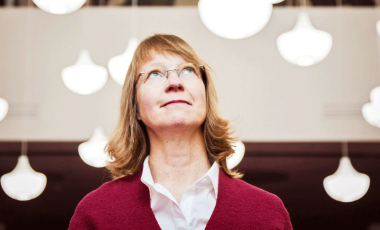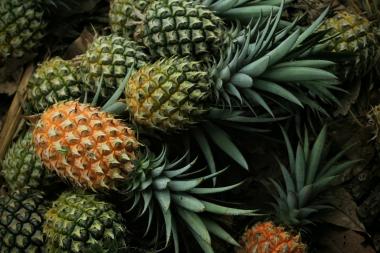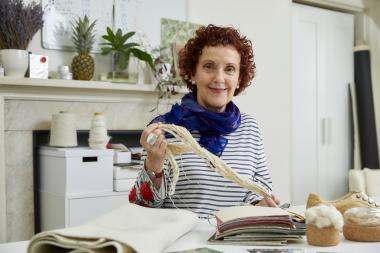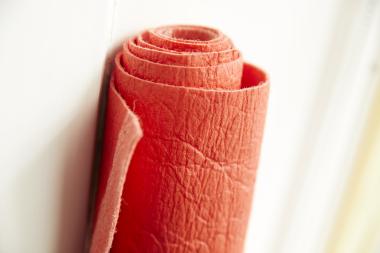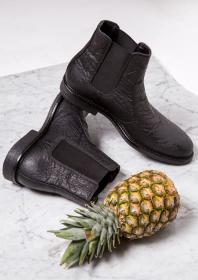Point of View: Let’s end fast fashion
Focusing on short-term profit isn’t sustainable. So what can we do to move in the right direction: favour resilience over efficiency in all industries.
We buy cheap products knowing we’ll need to replace them soon. We throw out used items rather than repairing or re-using them. Our employers plan in terms of financial quarters despite hoping to remain relevant and resilient longer-term. Even countries prioritise short-term economic output, focusing on gross domestic product (GDP) above any other indicator.
But does this way of living, working and weighing decisions make sense in the 21st century?
Our global obsession with economic short-term efficiency – and how to transform it – is a conundrum that Professor of Sustainability Management Minna Halme has been thinking about for most of her career. Even as a business school student, she felt flummoxed by how focused her classes were on short-term goals.
'It was about selling more, about maximising shareholder profits, about economic growth – but not really asking, Why? What's the purpose of all this?'
Halme says. 'Even 20-year-old me somehow just felt that this was strange.
'What are we trying to do here? Are we trying to create a better economy for all, or most, people? Whose lives are we trying to improve when we are selling more differently-packaged types of yoghurt or clothes that quickly become obsolete?'
Halme has devoted her career to studying these questions. Today, she is a thought leader in innovative business practices, with recognitions including serving on Finland's National Expert Panel for Sustainable Development and on the United Nation's Panel on Global Sustainability.
Her ultimate goal? Pioneering, researching and advocating for alternative ways of thinking that prioritise values like long-term economic sustainability and resilience – alternatives that she and other experts believe would provide more lasting, widespread benefit to all.
How traditional indicators have failed
One way in which our preference for economic efficiency shapes how we measure a country's overall well-being or status is GDP. This isn't the fault of the originator of the modern concept of GDP, who specifically warned against using it in this way in the 1930s.
'GDP was never meant to tell us about the wellbeing of the citizens of a country,' Halme says. Seventy-five years ago, however, it was easy to conflate the two. Many countries were more committed to redistributing their wealth among their citizens, and population surveys show that until the 1970s, GDP often correlated with general wellbeing.
But with the rise of increasingly heedless free-market capitalism, this became less the case – and GDP's shortcomings became all the more apparent. 'We are in a situation where the wealth distribution is more and more trickling up to those who already have capital. Those who don't have it are in declining economic positions,' Halme says. In fact, the richest 1% of the global population now own nearly half of the world's wealth.
Some governments, such as Finland's, do take indicators of environmental and social progress into account. 'But none is considered as important for decision-making as GDP,' Halme says – and GDP is also considered the arbiter of a government's success. It is that attitude that, through her work advising the Finnish government on sustainability practises as well as in her own research, Halme is trying to shift.
Where industries have failed
Our often-exclusive focus on the economy – and, in particular, on making profits as quickly and efficiently as possible – doesn’t provide a clear picture of how everyone in a society is faring. Worse yet, it has encouraged industries to act with a short-term view that makes for longer-term problems.
Fast fashion is one example. At the moment, supply chains for clothing – as for most other goods – are linear. Raw materials come from one place and are transformed step by step, usually at different factories around the world, using materials, energy and transport that are “cheap” because their high environmental costs aren’t included. They are ultimately purchased by a consumer, who wears the product temporarily before discarding it. To expand profit margins, the industry pushes fast-changing trends. A shocking amount of this clothing ends up in landfill – some of it before it's even been worn.
As the COVID lockdowns showed, this kind of linear supply system isn't resilient. Nor is it sustainable.
Currently, fashion is estimated to be the world's second most polluting industry, accounting for up to 10% of all greenhouse gas emissions. Aalto University researchers have reported that the industry produces more than 92 million tonnes of landfill waste per year. By 2030, that is expected to rise to 134 million tonnes.
Cutting fashion's carbon footprint isn't just good for the environment; it will help the longer-term prospects of the industry itself. 'With this kind of wrong thinking about efficiency, you're eroding the basis of our long-term resilience both for ecology and for society,' Halme says.
Getting out of this trap, she and other researchers say, requires a complete paradigm shift. 'It's really difficult to just tweak around the edges,' she says.
Towards resilience
For several years, Halme researched and studied ecological efficiency, looking at ways that businesses could make more products with a smaller environmental impact. But gradually she realised this wasn't the answer. Although businesses could innovate to have more efficient products and technologies, their absolute use of natural resource use kept growing.
'I began to think, "If not efficiency, then what?"' Halme says. She realised the answer was resilience: fostering ways for systems, including the environment, to continue and even regenerate in the future, rather than continuing to degrade them in the present.
The solution isn’t more of anything, even ‘sustainable’ materials. It’s less.
'The only way to fix fast fashion is to end it,' Halme and her co-authors write. This means designing clothes to last, business models that make reuse and repair more accessible, and prioritising upcycling. Recycling systems also need to be overhauled for when an item really is at the end of its life – particularly regarding blended synthetic fibres, which are difficult to separate and break down.
This would upend the current focus on short-term revenue above all else. And, says Halme, it is one more example of how we need better ways to measure the success of these industries, taking into account factors like resilience and sustainability – rather than just short-term profits.
And while individuals can make an impact, these changes ultimately have to be industry-led.
'Textiles are a good example, because if they break quickly, and if you don't have repair services nearby, or if the fabrics are of such lousy quality that it doesn't make any sense to repair them, then it's too much trouble for most people,' Halme says. 'So most solutions should come from the business side. And the attempt should be to make it both fashionable and easy for consumers to make ecologically and socially sustainable choices.'
What will it take?
The ultimate challenge, says Lauri Saarinen, Assistant Professor at the Aalto University Department of Industrial Engineering and Management, is how to shift towards a more sustainable model while keeping companies competitive. But he believes there are ways.
One option is to keep production local. 'If we compete with low-cost, offshore manufacturing by doing things more locally, and in a closed loop, then we get the double benefit of actually providing some local work and moving towards a more sustainable supply chain,' Saarinen says. For example, if clothing were produced closer to consumers, it would be easier to send garments back for repair or for brands to take back used items and resell them.
Local production is yet another example of the need to rethink how we measure societal success. After all, outsourcing and offshoring in favour of cheaper production may appear to cut costs in short term, but this is done at the expense of what Halme and other experts argue really matters – longer-term economic viability, resilience and sustainability.
Shifting towards this kind of thinking isn't easy. Still, Saarinen and Halme have seen promising signs.
In Finland, for example, Halme points to the start-up Menddie, which makes it easy and convenient to send items away for repairs or alterations. She also highlights the clothing and lifestyle brand Marimekko, which re-sells its used items in an online secondhand shop, and the Anna Ruohonen label, a made-to-measurecollection and customer on-demand concept which creates no excess garments.
It's these kinds of projects that Halme finds interesting – and that, through her work, she hopes to both advocate for and pioneer.
At the moment, she says, these changes haven't yet added up to a true transformation. On a global scale, we remain far from a genuine shift towards longer-term resilience. But as she points out, that can change quickly. After all, it has in the past. Just look at what got us here.
'The pursuit of economic growth became such a dominant focus in a relatively short time – only about seven decades,' she says. 'The shift toward longer-term resilience is certainly possible. Scientists and decision-makers just need to change their main goal to long-term resilience. The key question is, are our most powerful economic players wise enough to do so?'
As part of her research, Halme has led projects pioneering the kinds of changes that the fashion industry could adapt. For example, along with her Aalto colleague Linda Turunen, she recently developed a measurement that the fashion industry could use to classify how sustainable a product really is – measuring things like its durability, how easily it can be recycled, and whether its production uses hazardous chemicals – which could help consumers to decide whether to buy. Her colleagues curated a recent exhibition that showcased what we might be wearing in a sustainable future, such as a leather alternative made from discarded flower cuttings, or modular designs to get multiple uses from the same garment – turning a skirt into a shirt, for example.
Because all of this requires longer-term thinking, innovation and investment, industry is reticent to make these shifts, Halme says. One way to encourage industries to change more quickly is with regulation. In the European Union, for example, an updated set of directives now requires companies with more than 500 employees to report on a number of corporate responsibility factors, ranging from environmental impact to the treatment of employees. These rules won't just help inform consumers, investors and other stakeholders about a company's role in global challenges. They’ll also help assess investment risks – weighing whether a company is taking the actions necessary to be financially resilient in the long-term.
Aalto University, Amanda Ruggeri


